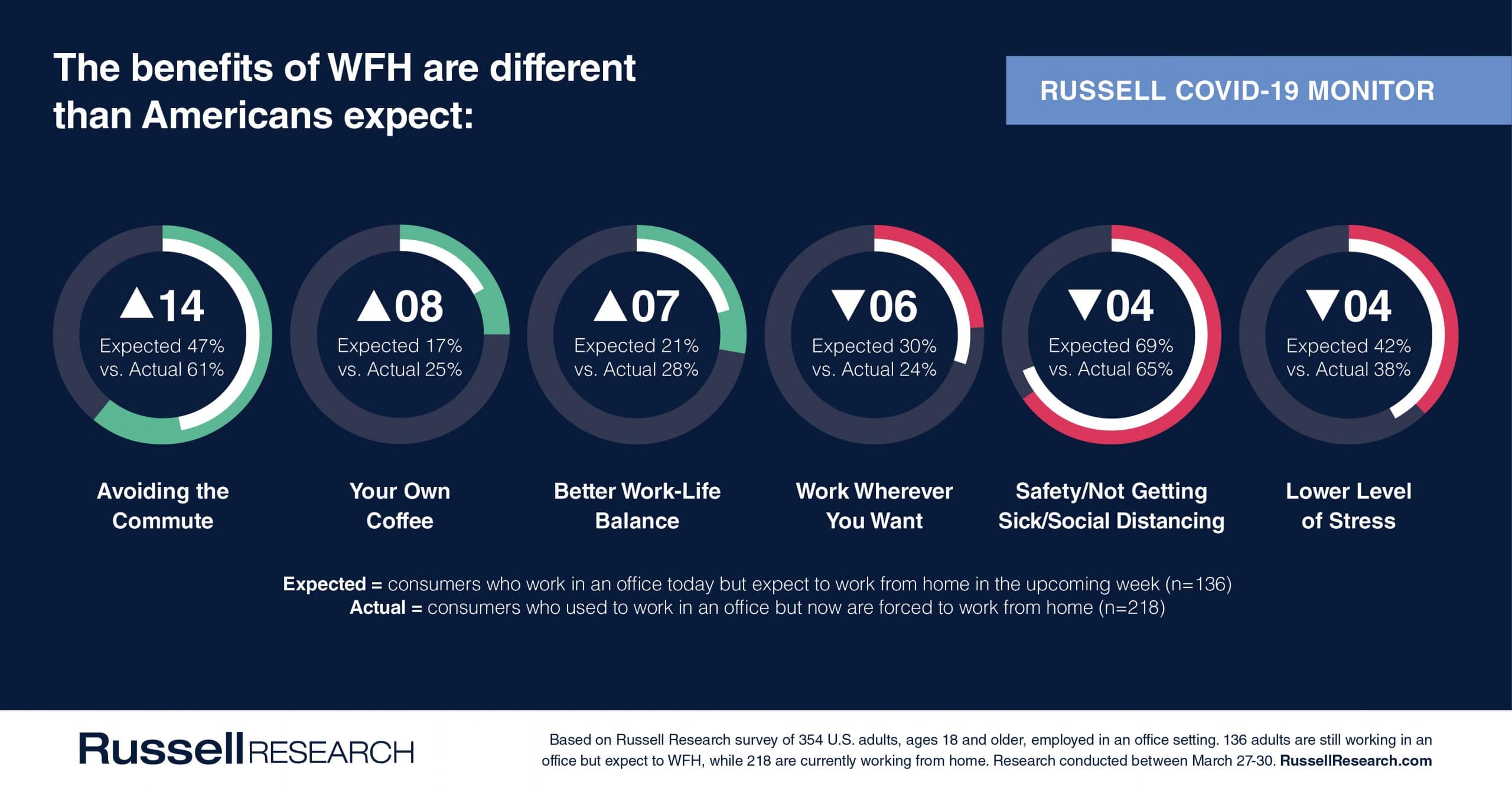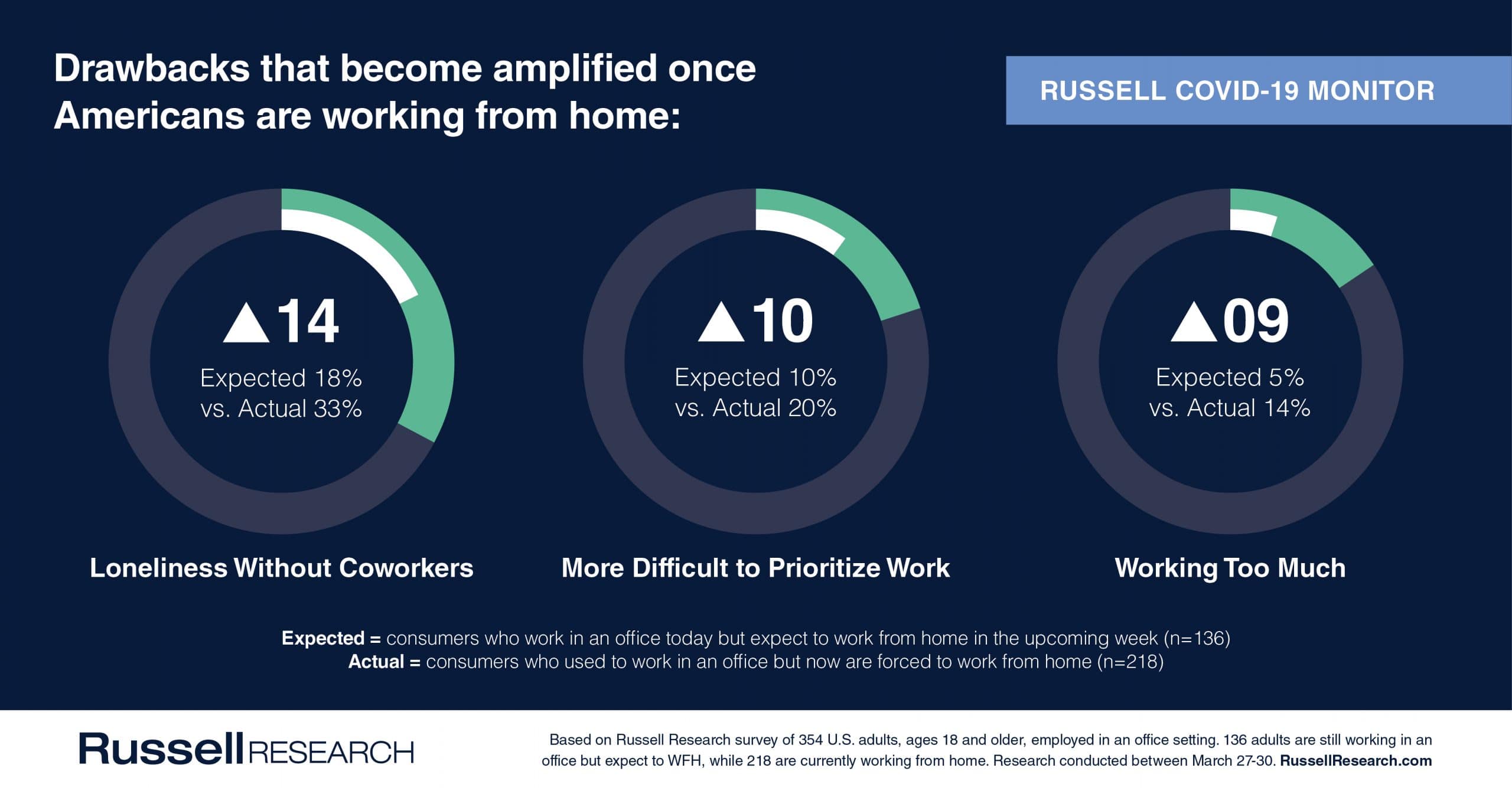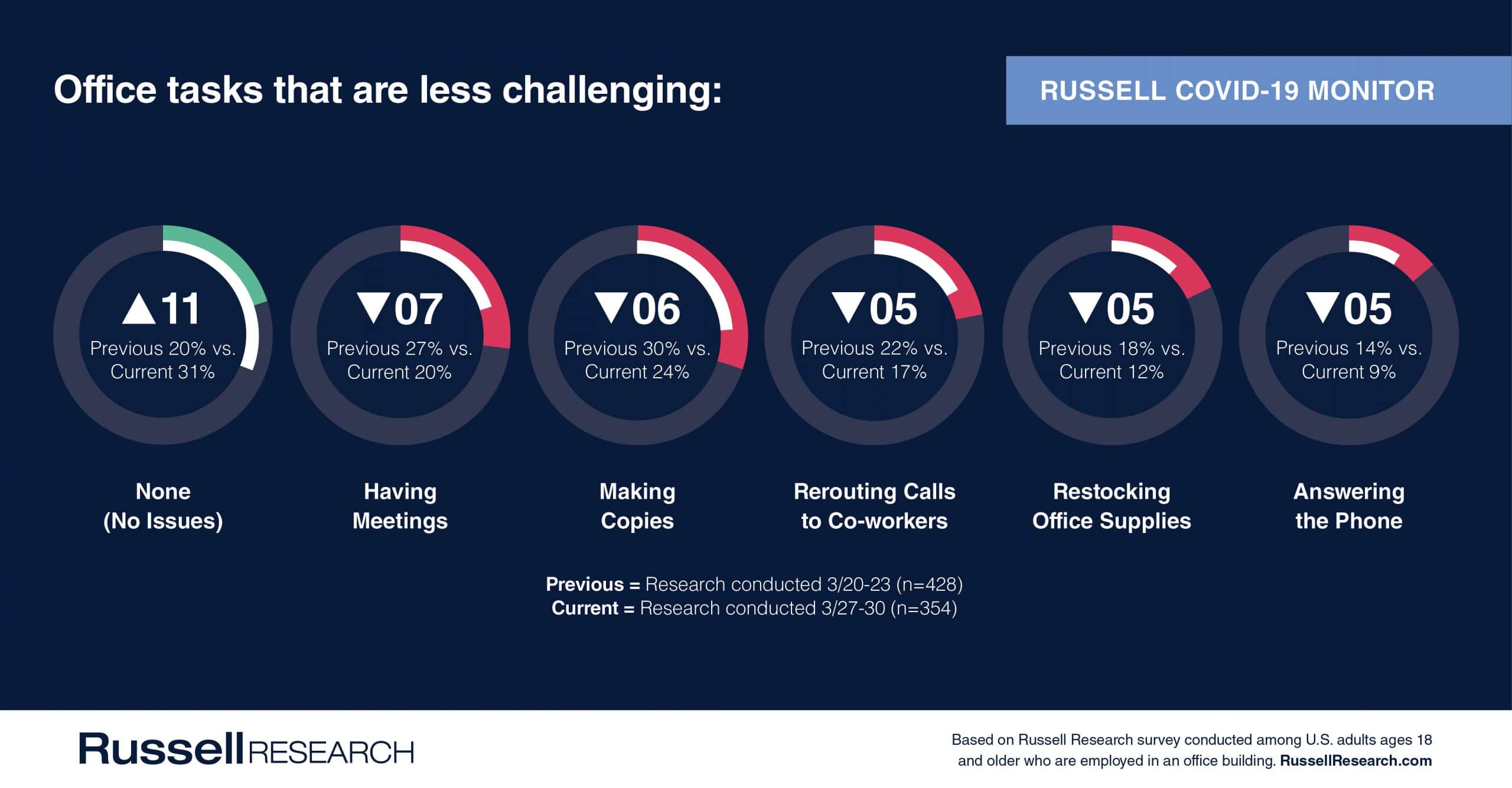Working From Home (WFH) In The Time of Coronavirus – April 6, 2020
Americans are only truly understanding the drawbacks and benefits of working from home (WFH) now that most of them have been given a reason to try it.
On the plus side, Americans expect it will be safer and support social distancing, allow them to avoid the commute, and provide them with the opportunity to wear whatever they want. Now that many Americans have experienced WFH, several benefits become even more appealing.
Here are some of the benefits of working from home that are a little better than Americans thought, and some that are a little worse:
Largest Actual Benefit Of Working From Home (3/27 – 30)
- 65% – Safety/not getting sick/social distancing
- 61% – Avoid the commute
- 54% – Wear whatever you want
- 43% – Saving money
- 37% – Lower level of stress
- 34% – Your own food
- 28% – Better work-life balance
- 25% – Your own coffee
- 24% – Work wherever you want
- 21% – Supervisor is not hovering over me
- 21% – Fewer distractions
- 3% – None of the above
Americans underestimated the impact of co-worker interactions and the amount of work they will have when working from home.
Americans recognize that working from home will have some drawbacks, but being lonely without co-workers is one that rises to the top of the list once they are actually working from home. It also seems that prioritizing work and the amount of work is underestimated.
Drawbacks that become amplified once Americans are working from home:
Largest Actual Drawback Of Working From Home (3/27 – 30)
- 37% – Difficulty focusing on work
- 33% – Loneliness without coworkers
- 24% – Constant interruptions
- 22% – No Pay/Less Pay
- 20% – More difficult to prioritize work
- 19% – The mayhem at home
- 17% – Require coworkers’ input to complete work
- 14% – Working too much
- 14% – Difficulty using conferencing software (ie. Zoom or Webex)
- 11% – Unable to work from home
- 8% – Lack of support and encouragement from my supervisor
- 7% – Free coffee
Working from home is getting easier. Or, we are learning to adapt.
Relatively quickly, Americans are already adapting to working from home and the challenges are becoming less prevalent. Nearly one-third of Americans indicated they experienced no challenges, up +11ppts from the previous week. Basic office tasks (making copies and restocking supplies) and communication (having meetings and answering phone calls) are all becoming less of an issue as people begin to settle into “the new normal.”
Challenging Tasks When Working From Home (3/27 – 30)
- 24% – Making copies
- 22% – Accessing old files
- 22% – Printing
- 21% – Scanning documents
- 20% – Having meetings
- 17% – Rerouting calls to a coworker
- 14% – Using programs which require significant computer speed and/or memory
- 12% – Restocking office supplies
- 9% – Having a conference call
- 9% – Answering the phone
- 6% – Working on a computer
- 5% – Other
- 31% – None of the above










